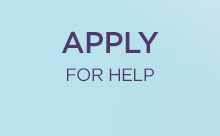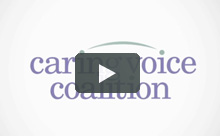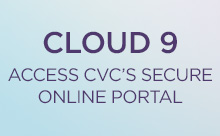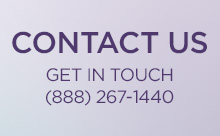Category Archives: Caregivers
← Previous postDo I Need a Power of Attorney?
May 1, 2013 A question CVC’s legal department is often asked is whether or not patients need a Power of Attorney (POA). But before I can answer that, I’d like you to understand what a POA is and whether one is appropriate for you.
A question CVC’s legal department is often asked is whether or not patients need a Power of Attorney (POA). But before I can answer that, I’d like you to understand what a POA is and whether one is appropriate for you.
What is a Power of Attorney?
A Power of Attorney is an agreement between two people: a principal and an agent. The principal, or almost always the patient, grants powers to the agent, or the caregiver, to make certain decisions on the patient’s behalf. These decisions can be based upon a range of issues, but they are typically financial or medical decisions. A POA steps in when the patient is no longer able to make decisions on his or her own behalf, and it allows the caregiver to designate who will make those decisions. Without a POA, a court or state may be able to designate someone to make decisions on the patient’s behalf. The person appointed might not be the person the patient would choose to make his decisions.
As an example, married couple John and Peggy choose to draft durable Powers of Attorney granting one another the authority to make financial and health care decisions on one another’s behalf. John discovers that he is diagnosed with Huntington’s Disease and eventually loses capacity to make decisions on his own. Because of the POA, Peggy can make decisions for John. Without that POA, their home state of Idaho could determine that Peggy is not the best person to make those decisions and instead designate John’s cousin, Nell, to make those decisions.
Do I need a Power of Attorney?
Probably. Most people who own property or have any money will need to make financial decisions, or difficult health care decisions later in life. If this is the case for you, you may want to consider having a POA in place.
The Specifics
When you draft a Power of Attorney, you must have the capacity to do so. Capacity is essentially the ability to make or enter into a legal relationship the same way someone with a sound mind would. Everyone is assumed to have a sound mind and be of normal intelligence. Someone can try to prove that you no longer have capacity. However, to do that, they must have specific and realistic proof.
So, if your illness is expected to progress in a way that may cause you to lose capacity, it is better to draft a POA sooner rather than later. You can speak to an attorney about tactics like videotaping the signing, getting one or many doctors’ statements of your competence, and/or having multiple witnesses at the signing of your POA to further support your capacity.
A POA must be durable to last after a patient loses his capacity. A durable POA will remain intact after the patient is no longer able to enter into legal relationships. A POA will terminate at death, even if it is durable.
The laws that govern Powers of Attorney vary state by state. Many people will need separate POAs for health and financial issues. Consult an attorney in your state to answer any specific questions you have and to draft a POA for you. If this is not financially possible for you, many state Departments of Health have free Medical Powers of Attorney or Health Care Proxies available through their offices. Contact your local Department of Health to request a copy of their form and for any specific instructions to complete.
If your family does draft a Power of Attorney, please send a copy to CVC. We can keep it on file in case the caregiver must sign on behalf of the patient when completing a new Terms and Conditions form or the incredibly important Renewal to receive a grant in
the new year.
The information presented in our website’s “Legal Corner” section is intended to provide information of general interest to the public and should not be relied upon as legal advice or counsel. This information should not serve as the basis for any legal decision by you. The information offered is not intended to create an attorney-client relationship, and your visit to our “Legal Corner” shall not be deemed to create such a relationship. Information posted in our “Legal Corner” may not reflect recent legal developments or decisions and therefore website visitors should consult an attorney if you have legal issues requiring attention.
 CVC Health Care Attorney Kristin Lough uses her background in finance and the law to help CVC patients. As part of the Appeals and Disability team, Kristin helps assist patients with insurance appeals and with applying for Social Security Disability.
CVC Health Care Attorney Kristin Lough uses her background in finance and the law to help CVC patients. As part of the Appeals and Disability team, Kristin helps assist patients with insurance appeals and with applying for Social Security Disability.
Finding Support for Chronic Health through Social Media
April 18, 2013 In today’s world, the ever-increasing need for technology and immediate information has dramatically changed the landscape of managing one’s health. In a report published in January 2013 by the Pew Internet & American Life Project, 72 percent of American Internet users have gone online to look for some kind of health information in the past year. The report also found that women are more likely than men to head to cyberspace to investigate potential health issues.
In today’s world, the ever-increasing need for technology and immediate information has dramatically changed the landscape of managing one’s health. In a report published in January 2013 by the Pew Internet & American Life Project, 72 percent of American Internet users have gone online to look for some kind of health information in the past year. The report also found that women are more likely than men to head to cyberspace to investigate potential health issues.
Frequently, people start looking for more information with a search through Google, Bing or Wikipedia. Beyond searching for a diagnosis or information about a specific disease, people also have turned to the Web for support. Niche communities that focus on an array of health issues, such as HealthCentral, Patients Like Me, Inspire or Treatment Diaries, invite individuals to share their personal stories about living with chronic illnesses. For many, social media, especially places like Facebook, have turned into a place for support and comfort. The web offers a virtual support system for many people, battling both common and rare conditions.
Scleroderma is a relatively unknown disease that affects approximately 300,000 Americans. Most general practitioners will never see a patient affected by the disease. The same is true in far too many instances of people living with scleroderma. In my role at the Scleroderma Foundation, I increase connections of people living with the disease and help them better access the essential resources they need so they can be a more involved member of their care team. In two years, our Facebook community has tripled in size to more than 10,750 users – the largest and most active of its kind among similar scleroderma organizations. In addition, many of our 24 chapters and 150 support groups across the country manage their own social networking communities, further engaging the scleroderma community.
I attribute the Scleroderma Foundation’s online successes to several factors. First, patients are becoming more active participants in their treatment plans, and secondly, online tools like Facebook offer an improved access to health information.
“I initially reached out to online resources when I recognized that no one in my world ‘got it,’” said Teri H., a registered nurse from Texas who has lupus and scleroderma. Teri said she joined our social community because, “I have felt I was in desperate situations with these illnesses in the last couple of years and I found great comfort in being able to read others’ posts as well as be able to share on different websites.”
There are many instances where people are unable to attend a support group in their own town. A disease like scleroderma can limit one’s mobility. The psychological effects of the disease also make it hard for some to go out in public. A virtual support group offers a unique opportunity to connect with others in an intimate and personal manner.
“Social media is like a huge support group. You may not have the intimacy of being in a small group but… I have actually become friends with people who have scleroderma and are from other countries,” said Helene G., who runs a scleroderma support group in San Diego and belongs to the Foundation’s Facebook community.
When Lora K. was first diagnosed with scleroderma, she and her husband initially turned to medical professionals for support. She was surprised at what happened.
“To our shock and grave disappointment, we discovered they offered no help,” Lora said. “To our continued amazement, they offered no information. Not even a suggestion as to where we might find information,” she said. “We had no choice but to seek help and information on our own.”
Teri, Helene and Lora’s stories are just the beginning of how some people living with scleroderma – along with their caregivers, friends and family members – have gone online to empower themselves with information.
In May 2009, we began a partnership with Inspire. With their help, our global online discussion board has grown from 2,300 users in 2010, to more than 6,700 users in 2012. Last year, there were 2,877 discussions started with nearly 30,000 replies from discussion board members.
Working closely with our Programs and Services team, we review journal entries and discussion posts. The message board’s posts help us generate content for our publications and our annual patient education conference. It steers us toward what issues people are currently experiencing and ensures that we have a pulse on common concerns.
In the coming years, the trend of people turning to the web for health information will continue to grow. As access to mobile devices becomes easier and less cost-prohibitive, online communities will see membership numbers surge. I predict that more medical professionals will take part in online discussions as their comfort levels and confidence increase, as well. This will help change the dynamic in the benchside setting, causing doctors and patients to be engaged members in one’s care plan.
 Christina Relacion is the Communications Manager at the Scleroderma Foundation’s National Office, located in metro Boston. Her primary interests include website production and social media. Her work has been recognized by the Wisconsin Healthcare Public Relations and Marketing Society, the Association of Marketing and Communications Professionals and other professional organizations. Christina has presented across the country on topics including social media, public relations and website management.
Christina Relacion is the Communications Manager at the Scleroderma Foundation’s National Office, located in metro Boston. Her primary interests include website production and social media. Her work has been recognized by the Wisconsin Healthcare Public Relations and Marketing Society, the Association of Marketing and Communications Professionals and other professional organizations. Christina has presented across the country on topics including social media, public relations and website management.
Examining the Patient/Doctor Relationship
January 25, 2013In the winter edition of Community magazine, we conducted two separate interviews with Pulmonary Hypertension patient Amanda Harvey-McKee and her doctor, Murali Chakinala. We asked them to individually discuss Amanda’s diagnosis, and how they’ve spent years increasing awareness on PH.
Interview with Amanda Harvey-McKee, patient of Dr. Murali Chakinala
 We did not have the easiest relationship starting out. Now, we work really well together, but it’s been eight years in the making.
We did not have the easiest relationship starting out. Now, we work really well together, but it’s been eight years in the making.
I was a biomedical research lab manager at the time of my diagnosis. At that time, not a lot of people knew what pulmonary hypertension was. We didn’t know what the treatment was (for a person who had PH secondary to a blood clot), what the diagnostics were, it was all very new. Things have changed in the past eight years, but back then, not a lot of information readily available.
At that moment of diagnosis, you’re trying to figure out what it all means, trying to define the big words – it’s a lot. And I even felt like I had an edge of other patients because I did come from a medical background, but in that field at that time, there just was not a lot of information about PH. So I started at zero like everyone else.
My primary care physical said that Dr. Chakinala was the person I needed to see. He was the expert in his field, the up-and-comer, and he was who I needed to talk to.
When I first saw Dr. Chakinala, he had a resident with him, and I fully appreciated that. But when you’re in the patient chair and not the teaching chair, it puts things into a very different perspective. It was very frustrating to me to sit and listen to them argue over pressures and counts and scores and tests and numerical values when ultimately I just wanted to know what I was supposed to do with this disease.
I left Dr. Chakinala’s office with him telling me I didn’t need to be considered for a very complicated surgery (PTE-pulmonary thromboendarterectomy) at that time. So just as I was wrapping my mind around the possibilities of a new game plan, a few days later, he called me at my home and said I needed the surgery. That completely irked me, to be honest. So after our first meeting, and that phone call, I felt really disheartened by the whole healthcare system. It added further confusion and frustration and meant that I needed to start preparing for what would inevitably be a life-altering procedure. It was too much and I went into a bit of denial. This turned out to be a mistake on my part, because Dr. Chakinala did the right thing: he went back to review everything again, seeing that my situation wasn’t straightforward. And ultimately, he was correct in the decision that I needed the surgery sooner rather than later.
I told Dr. Chakinala, “Thanks but no thanks, I’ll call you if I need you.” And after a while, I did.
I went into heart failure and knew that I needed the surgery, so I called Dr. Chakinala, told him I needed a referral and he said no problem. I’m grateful that he was still willing to take me on as a patient.
After my surgery, I started at ground zero with him. I told him I wanted to get involved with PH, and he introduced me to a few people, and we started a PH journey together, so to speak.
I became a support group leader, and he became my go-to person for any medical question or patient question. He was, and continues to be, very accessible to me. I’m very respectful of his time and status, but if I email him, he’ll get back to me right away.
I’m very fortunate to feel this level of security, just because my doctor is available when I need him. So from a patient perspective, and a support group leader perspective, Dr. Chakinala has really been invaluable to what I’m trying to do as an advocate for this disease. It’s a good relationship in that way. I had to let go of my controlling nature and have faith he was putting me first as a patient. Since then, we have open communication, where I can ask questions and voice concerns without judgment and know I’ll receive honest answers. This leads to me being more involved with my care and allowing him to help me do so. Trust, it comes down to trust.
Interview with Dr. Murali Chakinala, doctor of Amanda Harvey-McKee
 Our history as a patient and doctor has evolved quite a bit over time. When Amanda and I first met, she was already in my opinion quite sick and I thought she needed to go down a certain path in terms of treatment, which I’m sure was daunting and scary for her. But I did feel that a proven, surgical intervention was the only treatment for her.
Our history as a patient and doctor has evolved quite a bit over time. When Amanda and I first met, she was already in my opinion quite sick and I thought she needed to go down a certain path in terms of treatment, which I’m sure was daunting and scary for her. But I did feel that a proven, surgical intervention was the only treatment for her.
I met her when she was young, working, recently married – she was trying to lead a busy life and telling her she needed evasive surgery wasn’t what she wanted to hear.
So no, we didn’t really have a solid relationship to build off of. Our immediate reaction to each other wasn’t the best. And at the time, she said she didn’t want the surgery, and we ended up not communicating for about a year. When I did see her next, her health was much worse and I reiterated my recommendation and she went and had the surgery.
Her recovery was long and rocky. She nearly didn’t survive. But she kept fighting and managed to pull through rather well. Now she’s doing great, a new person in terms of how she feels and what she’s able to do. She’s extremely committed to the Pulmonary Hypertension Association cause. She’s also fully aware about how lucky she is and how unlucky other patients are, so she’s doing what she can to give back and act as a resource for patients in need.
Her and I have acted as partners in a lot of ways, in terms of her leading grass roots efforts to help other patients. She leads the support group meetings, and I try to be a medical resource for those groups. I send patients to her support groups, and she recommends patients to me from the support groups, so we really try to help each other out.
When I reflect back on all of this, I think Amanda and I would’ve done things differently, but I learned a valuable lesson. I was a young physician and I knew what she needed but I think I was a little too blinded and focused on the treatment and not thinking about what it meant to the patient and how much her life would be affected. And clearly I didn’t sense that she wasn’t prepared for that kind of news. Instead of coming on a little softer and introducing the idea while building a relationship of trust, I was more unilateral with my opinion.
The lesson I learned is that there are treatments that we know a patient needs, but as a physician, we have to respect a patient’s decisions and ways of thinking.
That’s the difference between being a doctor who has got the initials in front of their name and a healer, someone who is really trying to help the patient. We can’t distance our patients, we have to cultivate the relationship and bring them along.
Posted in Caregivers, Featured | Tagged Caring Voice Coalition, CVC | 2 CommentsStar’s story
January 15, 2013We have a 9-year-old daughter, Zoe, who up until September of 2012 had always been healthy, active and full of energy. At last year’s first soccer practice, Zoe was having trouble keeping up. Her face was red, her eyes and mouth were a pasty white; you could see her struggling to take a full breath.
Because, I am a home health nurse, I took her vitals and recognized right away that her blood pressure was elevated, oxygen levels were low 90’s and high 80’s, pulse was rapid, etc. During this whole episode, she was talking and wanting to eat. Her vitals soon resumed to normal.
We took her to our local doctor who told us her heart sounds were not normal and that an appointment need to be made with a pediatric cardiologist as soon as possible. Zoe continued to have mild episodes as described above, so we decided to take her to a pediatrician who was unable to find anything wrong. The next week, Zoe’s oxygen level dropped to the 80’s at school, so we took her to the pediatric group again.
There we saw a nurse who was immediately alarmed and called in the doctor that was working late sick call. They listened. When we left that night, the doctor told us what she believed the Zoe’s diagnosis would be: Idiopathic Pulmonary Hypertension.
Two days later, we were at Arkansas Children’s Hospital, where Zoe was prescribed medication to help combat her illness. Day’s later, it was suggested to us that we contact Caring Voice Coalition to see if they would help alleviate some of the financial burden of the medication.
My husband and I have talked about miracles and just truly believe CVC’s assistance was our Christmas miracle. We know in some ways that we have been fortunate – years were not wasted getting a diagnosis for this horrible disease, as it is for so many. We were put in the right place at the right time to see doctors and nurses who truly listened to what we were saying happened to Zoe at times, even though they could not see it happen in the office setting. They, like CVC took the time to care enough to listen and find a way to help.
“Thank you” is not enough to describe what we feel and think, but please know we will never forget or fail to see the significance of CVC’s gift.
Posted in Caregivers, Diseases, Featured | Tagged Caring Voice Coalition, CVC | Leave a commentAvoid 3 common caregiver medication mistakes
January 10, 2013Managing the wide array of medications an older loved one takes is one of many family caregivers’ primary responsibilities. But this can be a complicated task – and mistakes can happen when you least expect them.
Have you made one of the three most common medication mistakes?
Medication Mistake #1: Making Pills Easier to Swallow
Check with the pharmacist before you change a pill in any way. Certain medications given once a day, for example, are designed to have a timed release that occurs gradually throughout the day. Crushing them or cutting them in half could alter the way the drug is released, resulting in the person getting too much at once or none at all. If swallowing pills is a problem, ask the pharmacist if the medication can be provided in a smaller tablet or in a liquid form.
Medication Mistake #2: Filling a Pill Organizer Incorrectly
A 2011 study by Northwestern University’s Feinberg School of Medicine found that 60 percent of caregivers made errors when sorting medications into pillboxes, which speaks to just how complicated sorting multiple drugs with various timings for delivery can be.
Consider asking the pharmacist if he or she will sort the pills for you when prescriptions are filled. Some will do this routinely, while others will demonstrate it a few times to show you the best way to get started.
Medication Mistake #3: Storing Medications in “Typical” Places
Many people routinely store their medications in the bathroom medicine cabinet, but temperature changes and moisture levels can alter the medication once it is opened. Be sure to read the packaging on prescription medications for storage instructions.
For more information on managing your loved one’s medications, visit www.liftcaregiving.com.
Katie Gilstrap is cofounder of Lift Caregiving.
Posted in Caregivers, Featured, Media Center | Tagged Caring Voice Coalition, CVC | Leave a comment ← Previous post








